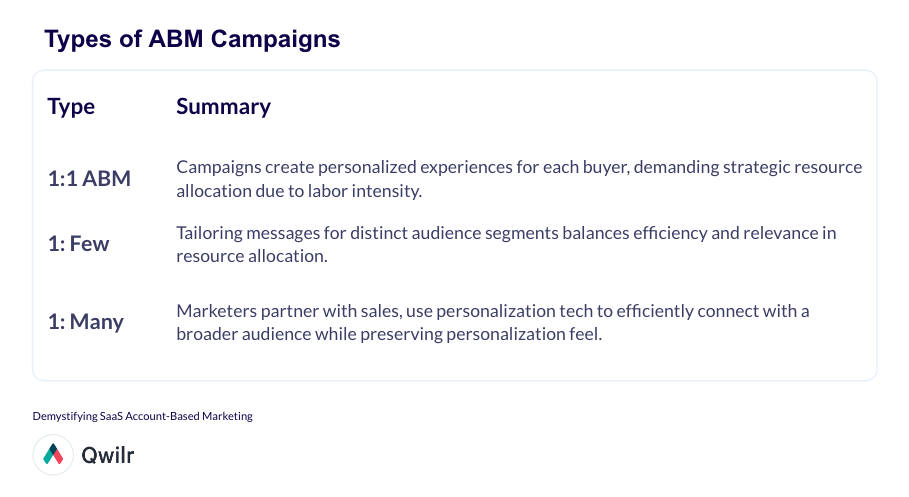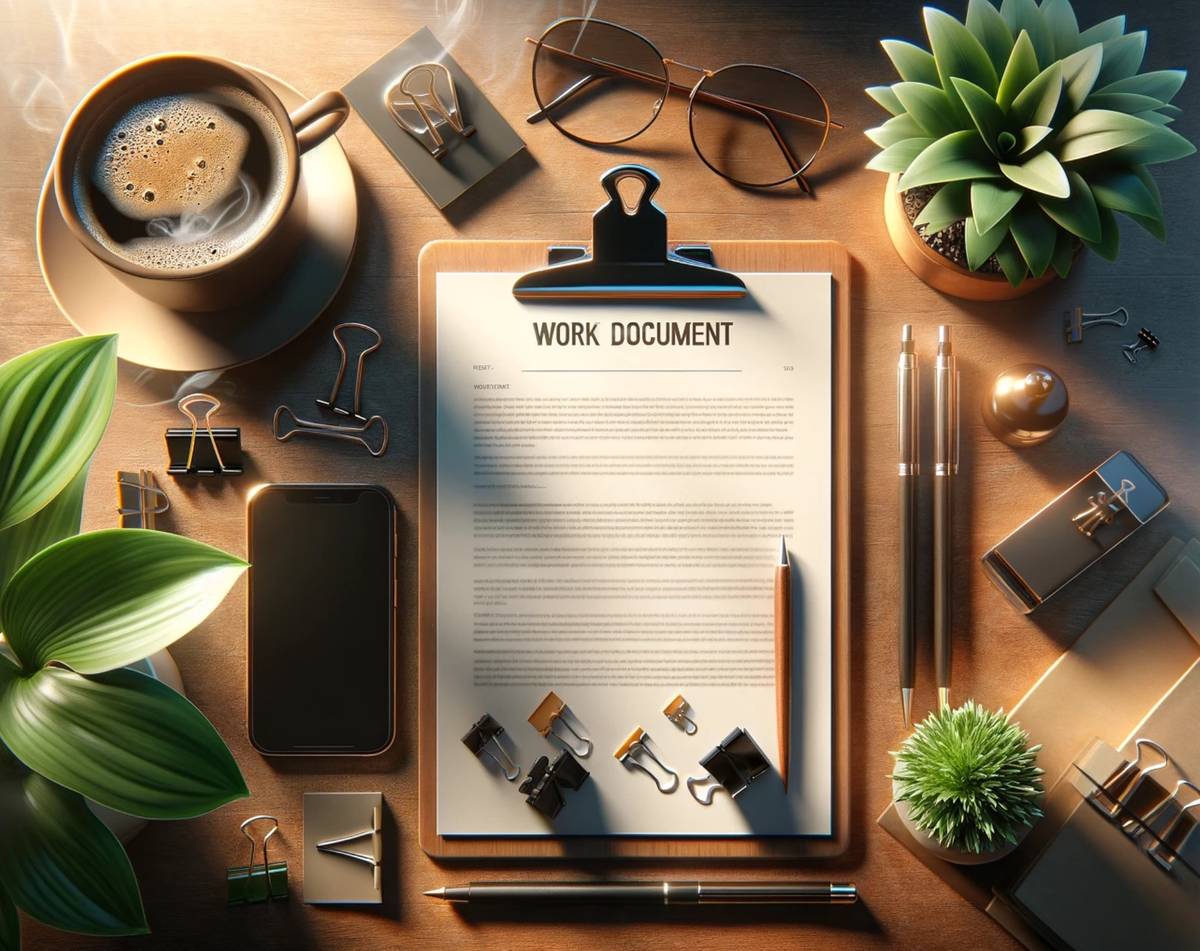Over the years, sales at B2B SaaS companies have evolved a great deal—better sales processes and newer sales tools have come to support sales teams making lead generation more efficient, so why are so many salespeople still failing to convert them?
That’s because many salespeople are still stuck with the old “spray and pray” method— send as much outreach as they can and hope for a return, irrespective of whether someone is an ideal fit for what they’re selling, let alone whether or not they’re ready to buy.
The end result? Missed sales targets, dwindling revenue numbers, and unsatisfactory sales performance.
If you’re a B2B SaaS business facing a similar challenge, It may be time for your team to explore SaaS Account-Based Marketing.
SaaS Account Based Marketing isn’t just another buzzword, we promise! We’ll dive into an account-based marketing strategy for your SaaS product and how you can run an effective pilot before finally flipping the switch.
What is Account-Based Marketing (ABM)?
So what is account-based marketing? In a nutshell, account-based marketing (ABM) identifies high-priority accounts and designs personalized, targeted campaigns to engage each individual.
The sole purpose of your ABM strategy is to convert your target accounts into customers. But this type of marketing also involves a mind shift.
Using account-based marketing, the b2b marketing and sales teams come together to target prospects inclined to make a future purchase, essentially “flipping the sales funnel.”
The focus is building relationships with high-quality leads rather than simply attracting a generalized audience. When done successfully, account-based marketing can generate positive sales results faster— from personalizing the marketing experience to shortening the sales cycle; there are several benefits associated with using ABM to target best-fit accounts.
What are the types of ABM Campaigns?
Depending on the makeup of your sales and marketing teams, there are a few ways you can create ABM campaigns. And while this methodology is all about personalization, there are a few ways you can start to scale these efforts. The three main types of ABM campaigns are:
1:1 ABM
1: 1 ABM is just that— a campaign focussed on creating a personalized experience for each buyer. With this method, marketers and salespeople treat each account as an "audience of one" and craft customized messages tailored to them. Given how labor-intensive it is, you really need to be strategic about where you invest your precious time and resources.
1: Few
Imagine you have a handful of audience segments. You could have one for customers in the technology industry, another for those in healthcare, and maybe even one for early-stage prospects who are just starting to explore your offerings. Each segment has its own unique characteristics and needs.
Now, instead of crafting a completely personalized experience for each account, you can focus on tailoring your message to resonate with each audience segment's specific needs and preferences. This is a 1: Few approach, which allows you to be more efficient while still delivering a highly relevant and engaging experience.
The 1:few method strikes a balance between scalability and customization. It allows you to efficiently allocate your resources and effort while ensuring your messaging resonates with each audience segment.
1: Many
In this approach, marketers team up with sales to identify a list of accounts using personalization technology to scale up outreach efforts and connect with a broader range of potential customers. It's an efficient way to make your message resonate with a larger audience while maintaining that feeling of personalization.
Tools like Mutiny can help businesses personalize at scale. With technology like this, you can still genuinely impact your audience. It helps you capture their attention by tailoring your messaging based on their industry, preferences, or even where they are in the buyer's journey. It's like having a personal touch without the daunting task of personalizing everything by hand.

When is ABM the best strategy for SaaS?
When it comes to SaaS sales strategies, Account-Based Marketing (ABM) can be a real game-changer as its benefits are unparalleled —60% of companies report at least a 10% increase in revenue in the first year of their ABM program. Companies that have adopted ABM reported an 84% improvement in reputation and an 80% improvement in customer relationships.
While ABM is a great secret sauce, it’s NOT for every SaaS business.
So, when is ABM the best strategy for SaaS? Well, it's particularly effective when you're looking to make a significant impact and really connect with your key accounts. Still, there’s a lot more to consider if your sales organization is looking to move in this direction.
Let’s look at some scenarios where it makes sense for your SaaS businesses to adopt an ABM strategy.
You have buy-in from the leadership team
The benefits of ABM and the growth it promises can be enticing to any organization, yet buy-in from C-suite or leadership team remains a big challenge for many teams. That’s because it’s often seen as just a marketing initiative rather than an organization-wide initiative with touchpoints across sales, customer success, and beyond.
Without that essential buy-in and support from all corners of your business, an account-based marketing campaign is bound to face challenges in achieving its goals. Research states that 42% of companies that missed their account-based objectives and targets lack dedicated leadership.
Moreover, With ABM, the results may not show up right from the start, so it requires considerable trust, patience, and some persistence to make it work.
You sell to mid-market and enterprise customers
Unlike a traditional transactional sales process where the focus is more on generating leads— even if they are less qualified—companies that champion ABM focus more on delighting their customers to retain them long-term -- And, they invest more time in building stronger relationships and nurturing prospects over time.
Clearly, account quality matters more than quantity here, and it’s safe to say that it is best suited for high-growth and mature SaaS companies which target mid-market and enterprise SaaS accounts.
Sellers targeting these types of customers are used to longer sales cycles and have experience convincing multiple decision-makers. The process is quite the opposite for smaller SaaS companies that still follow a less sophisticated sales process.
You have sufficient resources and budget to manage campaigns
The end goal with ABM is to target selected accounts precisely and effectively, which requires adequate resources to manage campaigns. As a result, ABM campaigns can be costlier than traditional campaigns due to the level of personalization required.
Apart from budget allocation towards specialized sales and support tools, ad spends, and funds for gifting programs, ABM campaigns may also require external expertise, specialized campaign execution, as well development of personalized content, all of which are resource-intensive steps.
The 2020 State of ABM Report found that companies with mature ABM strategies put 73% of total revenue down to account-based marketing efforts. This sounds like a lot of money, but many organizations are seeing a return on their investment.
Forrester reported that 91% of companies using ABM increase their average deal size, with 25% reporting an increase of over 50%. Linkedin, for example, showed up to a 208% uplift in its marketing revenue when it implemented ABM.
Pro tip: Before going all in on ABM, start with a trial run (and a budget that makes sense) to test the waters. We’ll show you how to implement this later in this article.
Brendan Connaughton, Head of Growth Marketing @ Qwilr
By doing a trial, you'll get a feel for the resources needed for a full-scale campaign and understand the value ABM can bring to your organization. It's all about setting yourself up for success and making the most out of your efforts.
You have deep insights into your ideal customer profile (ICP)
SaaS startups at an early stage have many things to figure out, including identifying their ‘best’ customers.
With the needs of the early adopters still being clarified, often gaining agreement on who the buyer is and who it should be, is difficult because so much is changing every day.
Teams are still figuring out whether they are in the process of crafting a product that tackles a genuine problem their customers are dealing with or if they still have some fine-tuning to do to truly wow them with customer delight.
This ambiguity often derails the strategic course for organizations leaning towards ABM.
For ABM to work for your SaaS, your business should have attained a product-market fit, i.e., your team deeply understands who your most valuable customers are and what opinions they hold for your brand and product while being able to address their own needs deeply.
If you haven’t decoded your ideal customer profile yet or haven’t reached a product-market fit, it’s worth waiting to implement an ABM strategy because, without these in place, you won’t be able to achieve the benefits. Moreover, you will create confusion among your team members as they will not be sure which prospects to focus their attention on.
There is alignment between sales and marketing
In an ideal scenario, the sales and marketing teams should work together and thrive, but in many instances, they don’t see eye to eye. On one side, you've got the marketing team which is all about wooing those target customers with persuasive tactics.
And on the other side, you've got the sales team working their magic to build personal connections and seal the deal. But here's the thing, sometimes these two powerhouses forget that they're actually on the same team, aiming for the same big goal—getting more revenue for the organization!
They often work in silos, not realizing they could achieve so much more by joining forces. That’s because the bigger your sales and marketing teams get, the harder it is to align these efforts, which often leads to miscommunication. Also, most sales and marketing departments don’t align on KPIs, which causes a lot of friction for organizations focussed on growth.
For example, your marketing team creates impressive content, but the sales team has no idea how to make the most of it, so it just sits there, unused and gathering dust.
If you’re looking to adopt Account Based Marketing for your SaaS company, you must ensure that your sales and marketing teams have tighter alignment. And it has its benefits! As reported by a joint Marketo and Reachforce study, companies using ABM are reported as 67% better at closing deals when they sync their sales and marketing teams and see an increase in their pipeline opportunities —it’s a win-win.
With a well-implemented SaaS ABM program, marketing teams can handpick the perfect content for each audience, so sales can confidently share the right pieces with buyers. It's like having a personalized matchmaker for your sales and marketing efforts!
How to run an effective Account-Based Marketing pilot
When starting your ABM program, it's always wise to begin with a pilot before going full throttle with a large-scale rollout.
Why? Well, a pilot allows you to test different ABM strategies and see what works and what doesn't.
Not only that, but a small-scale pilot also allows you to score some quick wins. Imagine this: You run a pilot campaign targeting a specific key account. By tailoring your approach and delivering personalized content, you win them over and secure a valuable deal.
These successes can be used to inspire and motivate your broader sales team, showing them the power and potential of ABM.
Starting with a pilot is like dipping your toes in the water before taking the plunge. It's a smart move that allows you to learn, optimize, and create those early wins to build momentum within your sales organization.
Let’s look at some of the critical steps that can help you run a successful pilot:
1. Conduct a scoping workshop
The first step in running a successful ABM pilot is defining the scope of the campaign, and the best way to get everyone on the same page is through a scoping workshop. The scoping workshop can facilitate several things, but its primary objective is to assess ABM maturity at your organization.
In other words, how capable is your organization of running a full-fledged ABM campaign if the pilot is a success, and what type of account-based marketing you’d like to champion?
Apart from this, you should also use the scoping workshop to determine the following:
- The duration of the pilot program—the specific timeframe for your initial ABM trial to set expectations and measure progress.
- The team that would work on it— the dedicated group of individuals who will collaborate and drive the pilot program forward.
- Roles and responsibilities of each team member—the tasks and duties of each team member involved in the ABM pilot to ensure smooth coordination and effective execution.
- Size of the target accounts: the ideal number and scale of target accounts that will be the focus of your ABM efforts during the pilot phase.
There are no right or wrong timelines, but a three-month period is ideally appropriate to keep things tight but give enough runway to understand how things are working. Depending on your sales cycle, you may need to adjust this timeline to fit your needs.
2. Define key metrics and identify target accounts
With a solid agreement on account selection criteria, reporting metrics, and lead qualification, you can save resources and take advantage of valuable opportunities.
The sooner you define them, the better it is, as it could lead to lost revenue, decreased customer satisfaction, and a weakened brand reputation which could spell disaster for your ABM campaign. But how do you go about it?
The best way to do this is by identifying the accounts in the pilot and then aligning on the metrics that will be used to evaluate success.
Narrowing down your metrics allows you to stay laser-focused on what really matters. It helps you measure progress effectively and ensures that your efforts are aligned with specific and measurable goals. Honing in on a few key metrics, such as conversion rate, sales velocity, and churn rate, can help you prioritize your resources and maximize your impact.
Here's the secret sauce: involving your sales representative in defining those metrics. They play a vital role in this process. Take the time to sit down with them, dig into the details, and assess factors like the launch point, sales cycle stage, customer profile, and target buyer insights.
By collaborating with your sales team, you'll gain valuable insights and discover the right ABM key performance indicators (KPIs) to focus on.
3. Develop personalized content
The success of an ABM campaign hinges a lot on personalization and something that will make your key accounts take notice. Additionally, marketers strongly agree that personalized content (56%) and advanced data management (43%) are keys to ABM's success.
Here's how you can make it happen:
- Encourage sales and marketing teams to share insights, swap stories, and learn from each other's experiences. By combining their knowledge, they’ll better understand what makes the target accounts tick.
- Work together to highlight your audience's specific needs, challenges, and aspirations. The more you know about them, the better you can tailor your content to speak their language.
- Slice and dice your content into bite-sized pieces. Take those industry-specific case studies, personalized emails, and targeted social media ads, and serve them up to each segment. You'll grab their attention and keep them engaged by catering to their unique tastes.
- Make your life easier by using marketing automation tools to automate personalized content delivery based on specific triggers. Set up workflows that automatically send the right content at the right time based on a prospect's behavior, job title, or where they are in their buyer's journey.
By bringing together the expertise of both sales and marketing teams, you can craft content that truly resonates with your audience and help you can grab their attention, build rapport, and increase your chances of converting them into loyal customers.
4. Analyze campaign results
Once you’ve gone through the above steps, it’s time to analyze the campaign results, and it starts by looking at the KPIs of the campaign that you previously set.
Testing and tracking the results of your individual campaigns and constantly monitoring account-level trends will ensure that your efforts are continually improving.
Your objective is to highlight successes and areas for improvement within your ABM strategy. Asking yourself questions such as are accounts engaging? Are you converting leads into contacts? Or is your client list growing?
Spending time thinking about the desired outcomes and how you will measure the impact of your efforts helps to isolate what components worked and what needs improvement for future success.
How to scale your Account-Based Marketing program
Have you already run a successful pilot program? Then it’s time to think about scaling the ABM strategy in your organization.
Leverage technology and data
Embracing the power of technology and data is crucial when scaling your ABM program, whether selling virtually or meeting with clients and prospects in person.
Utilizing ABM platforms and tools allows you to gain valuable insights into your target accounts, streamline your processes, and automate certain tasks.
For example, you can use buyer intent data to identify accounts showing strong buying signals and personalize your outreach accordingly. Sales tools like CRM systems, marketing automation platforms, and analytics software can help you track and measure the effectiveness of your ABM campaigns, allowing you to optimize your strategies based on data-driven insights.
Highlight high-value accounts
According to Adobe, 80% of a company’s revenue will originate from 20% of its leads. If you want to see a swift return on investment, it’s important to know which target accounts are most likely to provide a high-value payoff for the company.
Considering the target account’s market influence, do they have the potential to thrive amongst their competitors? You also need to identify which accounts will provide the best opportunities for your business. Are they likely to stay with you and purchase additional licenses or products? Will their potential success impact your company's brand awareness?
In order to identify your best-fit accounts, it’s time to start prospect profiling. If you want to convert your leads into sales, here’s how to gather actionable data about your target prospects:
- Analyze prospect characteristics. In order to pinpoint your client’s current position in the buying cycle, you need to acquire as much information as possible about the prospect’s company size and infrastructure, capacity, and financial capability. Using data enrichment tools such as Leadfeeder, ZoomInfo, and Clearbit to identify ready-to-buy sales leads will help pick high-value targets out of the crowd.
- Mine your CRM. Run reports to identify your biggest and most profitable customers. What commonalities do they share? Industry? Title? Other defining criteria? Then, use this data to build yourself a list of new prospects with similar attributes.
- Look at your competitors. Are your competitors attracting a specific customer segment you are missing? Is this a viable segment you can go after too? Or do you offer competitive advantages to go after some of your competitor’s customers?
Develop personalized content
Creating tailored content that resonates with your target accounts is important when scaling your ABM program. You did some of this in your pilot, but it's important to keep developing content that can be personalized for each account.
When thinking about your content plans, take the time to understand each account's pain points, goals, and challenges.
For instance, if you offer a SaaS solution for project management, create content that addresses common project management pain points, such as overcoming communication barriers or optimizing team collaboration.
Share practical tips, real-world examples, and success stories to demonstrate your expertise and the value you bring to their organization. You can develop content that speaks directly to their needs, such as case studies, whitepapers, and emails focused on improving their project management process.
By customizing your messaging and content, you'll establish stronger connections with your target accounts, accelerate demand generation, increase the likelihood of sales engagement, and improve your conversion rate.
Drive personalization with an insight-led campaign
Using customer insights to drive the foundations of your campaign planning will ensure that the results are personalized and speak directly to your best-fit accounts. For a campaign to be successful, it must target the potential challenges the client is facing and provide solutions that are personal to your client’s individual pain points.
As you are gathering data on your account’s behavior, position within the market, and even their company’s demographic trends, you’ll be able to effectively predict the optimal channels for campaign success and which platforms are most likely to be receptive, whether that be via the web, social media, or email.
Expand and replicate
Once you start seeing positive results from your ABM efforts, it's time to expand and replicate your success. Identify additional target accounts that fit your ideal customer profile and replicate the strategies that have proven effective.
Let's say you've successfully targeted and converted a few key accounts in the healthcare industry. Analyze what worked well and apply those strategies to other healthcare accounts. By scaling your efforts in a targeted and systematic way, you can increase your reach and impact within your target market while shortening your sales cycle!
Provide ongoing training
To ensure the success of your ABM program, it's crucial to provide ongoing training to your sales and marketing teams. Keep them up-to-date on the latest ABM trends, methodologies, and best practices. Conduct workshops, webinars, or lunch-and-learn sessions to share knowledge and foster collaboration.
For instance, you could bring in an ABM expert to conduct a training session on effective account targeting or personalized messaging. By investing in continuous education, you empower your teams to execute ABM strategies effectively, align their efforts, and drive better results.
Remember, scaling your ABM program is an iterative process. Be open to experimentation, adapt your strategies based on data and feedback, and always keep the lines of communication open between your sales and marketing teams.
With the right mix of technology, personalized approaches, replication of successful strategies, and ongoing training, you'll be well-equipped to scale your ABM program and drive growth for your SaaS business!
FAQs
What are the best Account Based Marketing tactics for Saas?
Identify Ideal Customer Profiles (ICPs): The first step is clearly defining your ideal customer profiles. Understand the characteristics, industries, and pain points that align with your SaaS offering. This will help you narrow down your target accounts and focus your efforts on those most likely to benefit from your solution.
Personalized Content and Messaging: Tailor your content and messaging to resonate with your target accounts. Highlight how your SaaS solution addresses their specific challenges and offers value. Whether it's through personalized emails, targeted landing pages, or customized case studies, make sure your messaging speaks directly to their needs.
Account-Based Advertising: Leverage targeted advertising campaigns to reach your key accounts. Platforms like LinkedIn, Facebook, and Google Ads allow you to create highly specific ad campaigns that focus on your target accounts. This enables you to increase brand visibility and capture the attention of the stakeholders within those accounts.
One-to-One Outreach: Reach out to your target accounts on an individual level. This could involve personalized emails, direct messages on LinkedIn, or even picking up the phone for a call. The goal is to establish a personal connection and start a conversation showcasing your SaaS solution's value.
Webinars and Thought Leadership: Host webinars or create thought leadership content that positions your SaaS company as an industry expert. By sharing valuable insights and knowledge, you can attract the attention of your target accounts and build credibility in their eyes.
Customer Advocacy: Encourage your satisfied SaaS customers to become advocates for your brand. Case studies, testimonials, and referrals from happy customers can be powerful tools in ABM. Prospects within your target accounts are more likely to trust the recommendations and experiences of their peers.
What are the best ABM messaging channels?
The best channels for messaging target accounts in an Account-Based Marketing (ABM) campaign are:
- Blogs: Blogs are a fantastic way to share helpful and educational content with your target accounts. By creating engaging blog posts that address their challenges and offer solutions, you can show your expertise and catch the attention of key decision-makers.
- Email: Email is still a powerful channel for ABM because it allows you to send personalized messages directly to the people within your target accounts. You can nurture relationships, provide relevant information, and keep the conversation going.
- LinkedIn: LinkedIn is like a goldmine for ABM. It's a platform to connect with important decision-makers, engage in industry conversations, and share valuable content. It's a great place to build relationships and create interest in what you have to offer.
- YouTube: Videos are becoming increasingly popular in ABM strategies, and YouTube is the perfect platform for it. You can create engaging videos that showcase your products, demonstrate your expertise, and even send personalized messages to your target accounts.
- Content Syndication: Content syndication means partnering with other platforms to distribute your content to a broader audience. By teaming up with established channels in your industry, you can increase your brand's visibility and reach the key decision-makers in your target accounts.
- Webinars and Virtual Events: Hosting webinars and virtual events specifically for your target accounts is an excellent way to engage with them and provide valuable content. These platforms allow real-time interactions, Q&A sessions, and networking opportunities, which can help you build connections and generate interest in your offerings.
Remember, the effectiveness of these channels may vary depending on your specific audience and their preferences. Researching and understanding your audience's behavior is essential to determine which channels will work best for your ABM messaging strategy.
What is the most common mistake in ABM for SaaS?
The most common mistake in ABM for SaaS is focusing too much on the big players and neglecting the mid-market. Of course, it's important to prioritize those big accounts, but ignoring the mid-market or smaller accounts can be a missed opportunity.
They may have a different immediate revenue impact than the big fish, but they have growth potential. Plus, they can become valuable customer references and contribute to your long-term success.
Customize your ABM efforts to cater to their specific needs, provide them with tailored content, and engage with them. Treat them as valuable prospects who can help you expand your customer base and maximize growth.
A smart ABM strategy in the SaaS world considers accounts of all sizes and balances short-term revenue impact with long-term growth.
What’s the difference between ABM and Inbound Marketing?
ABM and Inbound Marketing are different approaches to reaching and engaging with your target audience. While they both drive business growth, they have distinct strategies and focus areas.
ABM is a marketing strategy that targets specific high-value accounts or companies. It's a personalized approach where you tailor your marketing efforts to fit the needs and preferences of individual accounts.
On the other hand, Inbound Marketing is a strategy that focuses on attracting and engaging a broader audience through valuable and relevant content.
It involves creating content that addresses your target market's pain points and challenges, positioning your brand as an expert and thought leader in the industry. Inbound Marketing aims to drive organic traffic to your website, generate leads, and nurture those leads into customers.
Adopting ABM for your SaaS: The Way Ahead
In the ever-evolving landscape of SaaS marketing, embracing Account-Based Marketing is a strategic move that can set you apart from the competition.
Adopting a personalized, targeted approach can build stronger customer relationships, drive higher ROI, and unlock untapped growth potential for your organization.
We hope that armed with the knowledge, insights, and practical tips shared in this comprehensive guide, you can embark on your ABM journey and unlock the path to success!
About the author

Brendan Connaughton|Head of Growth Marketing
Brendan heads up growth marketing and demand generation at Qwilr, overseeing performance marketing, SEO, and lifecycle initiatives. Brendan has been instrumental in developing go-to-market functions for a number of high-growth startups and challenger brands.









